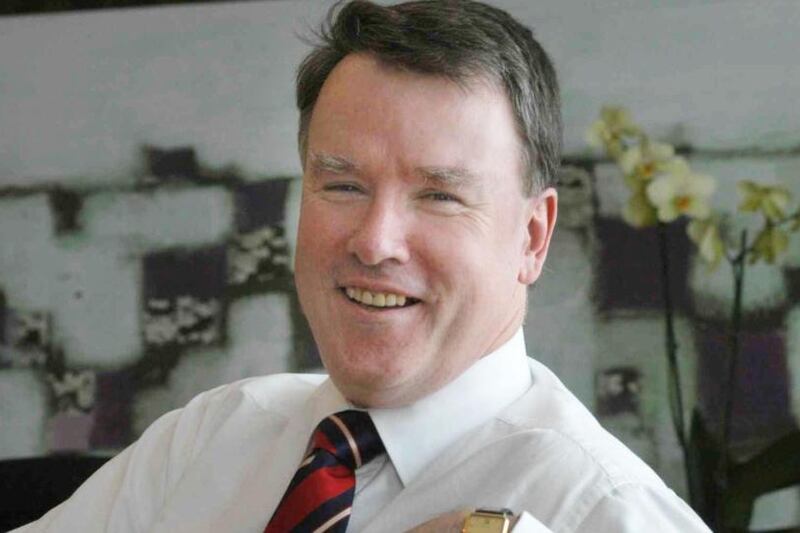Irish property group Cairn Homes will host its AGM on Wednesday morning in the Westbury Hotel, bolstered by having successfully raised €51.9 million in gross proceeds from a share placing this week.
This was a strong signal of investor appetite for Irish residential property, which is no surprise given that house price inflation is running at 10 per cent annually, largely due to a shortage of supply in the market.
The listed company is also looking to offload some surplus residential land and to boost its credit facilities with lenders to give it some extra firepower to bid for various sites around Dublin.
In housebuilding terms, Cairn is the new kid on the block. Set up two years ago and listed in London, it has a land bank that could accommodate about 12,000 units.
Last year, Cairn built 105 units but expects to ramp this up to between 375 and 400 homes in 2017.
It will undertake an “off-plan” launch of the first phase of its 1,095-unit Shackleton Park development in Lucan, Co Dublin, later this week. And it intends to release an additional 40 units at its upmarket Marianella apartment development in Rathgar this month, to bring the total number of sale-agreed units there to more than 100.
RTÉ site
Cairn’s bulging war chest is potentially good news for RTÉ, which is seeking to sell 8.64 acres of surplus land at its Montrose complex in Donnybrook. Savills is guiding €75 million for the prime site, which equates to €8.7 million an acre.
The estate agent has signalled that more than 500 apartments could be allowed on the site, which would equate to about €150,000 per unit if the guide price is reached.
Montrose is a high-end location and these will not be cheap apartments. First-time buyers need not apply, unless they have very deep pockets.
As a listed company, Cairn’s level of building activity is publicly disclosed. But most developers here are privately owned and it is difficult to get a handle on the real level of activity in the market.
Figures from the Department of the Environment tell us that 14,932 units were completed last year, up 18 per cent on 2015. But these figures are disputed by property commentators, who argue that they reflect ESB connections rather than actual new builds.
The Construction Industry Federation expects activity to pick up further still this year to between 18,000 and 19,000 homes. Some 2,507 completions took place in January and February, according to the department.
Demand is put at between 25,000 and 30,000 units annually, a level that is years away from being met.
The reasons for Ireland’s housing crisis have been well aired. Recently, I spoke to Cork developer Michael O’Flynn, who said the Government needed to act on a range of input costs, such as VAT, development levies, and the “part-five” planning rules on social and affordable housing, while also making funding available for infrastructure.
O’Flynn built about 250 units in 2016 and expects to beat that number this year but says the going is tough, due to affordability issues created by the Central Bank’s rules on mortgage lending.
“We haven’t dealt with problems on the supply side,” he told me. “The only resolution to rising house prices is increased supply but this continues to be a problem, with the main issue being around the cost base of the industry.”
Imaginative solutions
Private housebuilders have an important part to play in dealing with the housing crisis but they are never going to solve this problem for us.
In essence, they’re never going to build homes at a rate that could make prices fall. They’d all go bust if they did.
Instead, it will take imaginative solutions from the Government to invest in social housing. This could involve lending money to approved housing bodies to build units, and allowing councils to borrow for building.
It also involves utilising State-owned lands, particularly in Dublin, where we currently have bus garages occupying prime sites in Donnybrook, Ringsend and Clontarf when alternative locations on the fringe of the city could be found. And relaxing height restrictions to allow for taller buildings (not skyscrapers) in more locations.
It also requires more regional development to take the pressure off Dublin. There are plenty of open spaces on the rail corridors from Dublin to Cork and Dublin to Limerick that could be developed into new communities linked in both directions by proper public transport.
The Government’s action plan for rural development, launched in January, offers the perfect opportunity to explores such possibilities.
There is no shortage of land in Ireland for housing our citizens. We just need to think differently about its use.
Twitter: @CiaranHancock1













